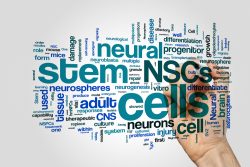
Researchers at the University of California, Irvine, have made a discovery that may improve the ability to control the formation of mature cells after stem cell transplants. Intrinsic cell properties have been identified that affect the fate of neural stem cells. The discovery could help scientists in predicting or controlling the fate of stem cells thereby improving their use in transplant therapies.
Neural stem cells can become one of 3 types of brain cells: neurons, astrocytes or oligendrocytes. The study revealed that neural stem cells which differed in fate potential expressed distinct patterns of sugars on the cell’s surface. The sugars contribute to electrical properties of the neural cell membrane and ultimately result in cell fate. Stem cells which hold great promise for disease treatments, can also pose difficulties in knowing what a stem cell will become after transplantation. The same number of stem cells can be transplanted in different patients, but the outcomes can be significantly different if cells transplanted in one patient become astrocytes and the cells in another patient become neurons. With the new discovery, scientists were able to predict what a neural stem cell will become and potentially direct cell fate. This would greatly enhance the success of stem cell transplantation therapies for a variety of diseases.
By using electrical properties, the research team discovered a new way to identify and then sort neural stem cells. They built on these findings by showing that differences in cell surface sugars are the reason these cells have different electrical properties. This study examined a variety of pathways that add sugars to cells and were able to find one that differed between cells that make astrocytes and cells that made neurons. The team stimulated the pathway in neural cells, changed the cell electrical properties, and caused the cells to make more astrocytes and fewer neurons. This showed that cell surface sugars can control cell fate. This pathway is active in cells which are grown for transplants and also in cells of developing brains. This pathway could also control how neural stem cells form astrocytes and neurons when the brain is being formed during development.
The researchers are now studying whether this pathway changes how cells will behave in transplants or how a developing brain is formed. To see how the process is regulated, they are focusing on the machinery inside the cell which adds the sugars in the first place. They have also found that particular proteins on cell surfaces are altered by this pathway which will help them uncover how the sugars go about telling stem cells which type of cell to form. The long term goal of the studies is to find methods to improve the effectiveness stem cell transplants for treating disease and injury.
To view the original scientific study click here: The Long Noncoding RNA Lncenc1 Maintains Naive States of Mouse ESCs by Promoting the Glycolysis Pathway.





